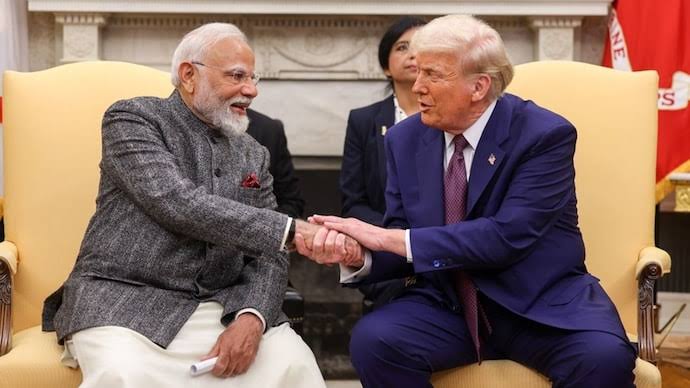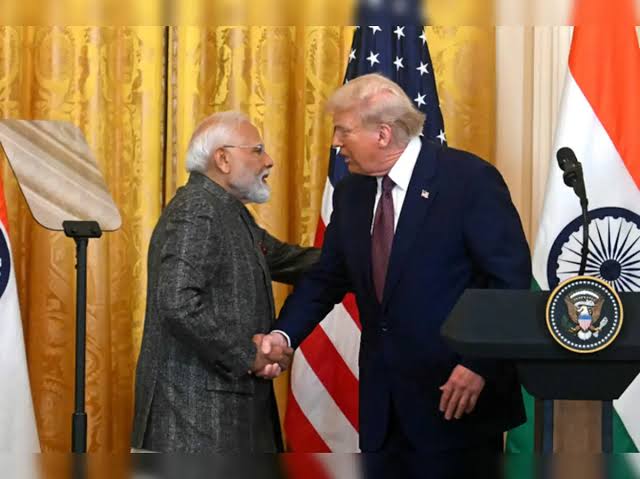The global economy is bracing for a significant shift as U.S. President Donald Trump prepares to implement a sweeping set of reciprocal tariffs. Set to be announced on April 2, these tariffs are expected to create ripples across international markets, with India among the hardest-hit countries. The move comes as Trump’s administration argues that countries like India, the European Union, Japan, and Canada have imposed unfairly high tariffs on American products, necessitating a rebalancing of trade terms.
 A report by the Washington Post suggests that the new tariffs could impose a 20% tax on most imports to the U.S., with the revenue potentially redirected as tax refunds to American citizens. While Trump’s team deliberates on whether to introduce a flat tariff or a more customized approach, the uncertainty has already triggered concerns among global financial markets.
A report by the Washington Post suggests that the new tariffs could impose a 20% tax on most imports to the U.S., with the revenue potentially redirected as tax refunds to American citizens. While Trump’s team deliberates on whether to introduce a flat tariff or a more customized approach, the uncertainty has already triggered concerns among global financial markets.
For India, the impact could be particularly severe. According to trade experts, key sectors such as processed foods, agriculture, pharmaceuticals, and machinery will bear the brunt of these measures. A report from the Global Trade Research Initiative (GTRI) highlights that India’s processed food exports, including sugar and cocoa, may face a tariff gap of nearly 25%. Similarly, seafood and meat exports worth $2.58 billion could be subjected to a 27.83% tariff differential. With total trade losses estimated between $6 billion and $7 billion, India’s GDP may take a slight but concerning dip of 0.1% to 0.2%.
The European Central Bank has also expressed apprehension over the impact of these tariffs on the global economy. Christine Lagarde, the ECB chief, warned that such trade measures could spark further economic instability, depending on their extent, duration, and the potential for retaliatory measures from affected nations. Indeed, major global economies are already considering countermeasures. The European Union has hinted at retaliatory tariffs targeting U.S. exports such as steel, aluminum, and agricultural products. Similarly, Thailand has announced plans to reduce its trade surplus with the U.S. by increasing imports of American energy and food products, a move aimed at softening the blow of the tariffs.
The shipping industry, a key player in global trade, is also on high alert. Major companies like MSC, Maersk, and CMA CGM are closely monitoring the situation as they prepare for potential disruptions. These firms, which transport billions of dollars’ worth of goods annually, fear that declining trade volumes could significantly impact their bottom line.
Meanwhile, financial markets are responding with caution. Gold prices, a traditional safe-haven asset, have surged to record highs as investors seek stability amid economic uncertainty. The Indian rupee has also reacted negatively, opening 22 paise lower against the U.S. dollar ahead of the announcement.
While the Trump administration insists that tariffs are necessary to protect American jobs and industries, critics argue that the policy may backfire. Senate Democratic leader Chuck Schumer has labeled the move a “failed strategy,” suggesting that tariffs have historically been used to generate government revenue rather than to support economic growth. There are also concerns that companies may struggle to absorb the increased costs and could pass them on to consumers, exacerbating inflationary pressures.
Despite the challenges, India is actively engaging with the U.S. to find a middle ground. Reports indicate that India has agreed to the Terms of Reference (ToR) for a Bilateral Trade Agreement, signaling a willingness to negotiate tariff reductions in exchange for concessions. However, the road ahead remains uncertain as both countries navigate the complexities of trade diplomacy.
As the world watches Trump’s tariff announcement unfold, the broader implications of these measures will take time to materialize. While some industries may find ways to adapt, others could face lasting disruptions. With global trade at a crossroads, the coming months will be crucial in determining whether these policies lead to economic resilience or unintended consequences.




